Nuclear reactor for NNSL. Will “Poseidon” lay Dollezhal's egg?
Dollegeal Egg
From the very beginning, in an effort to increase the range of the 651 submersible diesel-electric submarines, the designers laid silver-zinc batteries instead of lead-acid batteries. In practice, it turned out that silver-zinc batteries have two critical drawbacks: high cost and short service life (up to 100 charge-discharge cycles), which determined the return to lead-acid batteries.
However, in addition to batteries of increased capacity, more radical solutions were considered for the XDUMX diesel-electric submarines of the 651 project. In principle, the Soviet Navy (Navy) of the USSR parallel to the construction of boats of the 651 project was preparing for the construction of nuclear submarines of the 675 project, with the same P-6 cruise missiles that were installed on the 651 project diesel submarines. However, 675 submarines of the project were significantly more expensive than the 651 submarines. A solution was needed that would allow the submarines (PL) of the 651 project to have an unlimited range of underwater submarines, while maintaining the other characteristics at the level of the diesel-electric submarines of the original project.
As a solution, the creation of a small-sized nuclear reactor, the so-called Dollezhal eggs, was considered, on behalf of its creator Nikolai Dollezhal, chief designer of atomic reactors for the Soviet Navy. At the initial stage, the project suggested placing the reactor in a separate capsule and towing it on a cable with a cable in order to abandon the heavy biological protection. However, such a concept was immediately rejected, both because of the high probability of losing the capsule with the reactor, and because of the potential possibility of tracking the submarines along the radioactive trace. In the future, the placement of the reactor outside the robust diesel-electric submarine pressure vessel, but within the framework of a single “rigid” submarine structure, was considered.
It is obvious that the technologies of that time did not allow the creation of a sufficiently compact and reliable maintenance-free reactor with acceptable characteristics. In the future, the idea of installing a nuclear power plant (NPP) on diesel-electric submarines returned more than once. In particular, the 651 project for the creation of a mass submarine equipped with low-power nuclear power plants was developed on the basis of the diesel-electric submarines of the 683 project. This submarine was to be built in large quantities in factories that previously produced diesel-electric submarines. The 683 project was delayed and did not develop, presumably because by that time the USSR already had sufficient production capacity to produce full-fledged nuclear ships in the quantities required by the Navy.
The project 651 was not forgotten either. In the 1985 year, one of the boats of this project was reworked according to the 651E project, developed as early as the 1977 year. As part of the modernization, the submarine was equipped with a compact low-power nuclear power unit developed at the Research and Design Institute of Power Engineering (NIKIET) - currently, the Order of Lenin, N.A. Dollezhal. Within the framework of the 651E project, low-power nuclear power units were located in the lower aft submarine outside a robust hull. Used single-circuit reactor of boiling type. However, the submarine project 651E also did not leave the stage of the prototype.
Multipurpose Russian submarines
With the collapse of the USSR and the loss of a significant part of its industrial potential, Russia once again faced the problem of a shortage of nuclear submarines. The 885 / 885М “Ash” multi-purpose nuclear submarine project, despite all its advantages, turned out to be extremely expensive and difficult to build. In total, it is planned to build seven ICCPLs of the 885 / 885М project, which is completely inadequate given the rapid obsolescence of the third-generation nuclear submarines of the third generation of 971 and 945 / 945А projects in the Russian Navy.
At the moment, the design of a new-generation multi-purpose submarine Husky is underway. The Husky project is still filled with rumors rather than real information. Presumably, the submarines of this project will be smaller and cheaper than the XTsL project 885 / 885М, which allows to draw an analogy with the super-expensive US Seawolf submarines and developed them to replace the more versatile and relatively inexpensive submarines of the Virginia type.
At the same time, there are risks that the Husky project, especially if it implements a high coefficient of technical novelty, may face unforeseen delays and cost increases.
NNS in Russia and in the world
Another way to enhance the underwater component of the Navy is to build non-nuclear submarines. And in this segment in the Russian Navy also not everything is going smoothly. Currently, the global trend is to equip non-nuclear submarines with air-independent power plants (VNEU), made on various principles - fuel cells, Stirling engine. The presence of VNEU allows you to radically increase the range of the submerged course of the naval nuclear submarines, bringing its capabilities closer to nuclear submarines, with the significantly lower cost of the former.
Unfortunately, the Russian projects of the VNEU for the Lada 677 naval submarines faced problems, like the entire 677 project, as a result of which the first submarines of this project are expected to be implemented without installing the VNEU.
Accumulators for NNSL
Another option is to equip the naval subsystems with lithium batteries of increased capacity chosen by the Japanese naval forces (Navy), which also operate the naval submarines with a Stirling engine. It is assumed that the use of lithium batteries of high capacity will allow DAL NNS autonomy comparable to that which allows the use of VNEU, but at the same time lithium batteries provide a greater range of underwater travel at high speeds.
Critics of lithium batteries speak of their tendency to fire and explosion. However, it can be assumed that industrial, and especially military use of such batteries will involve increased attention to safety issues and minimizing the potential risks of overheating or deformation of batteries. The biggest obstacle to the introduction of lithium batteries on the NAMS is their high cost.
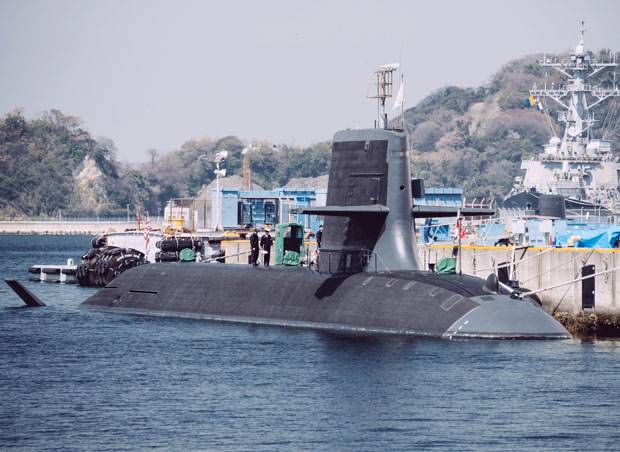
The prospect of using lithium batteries in the interests of the Navy is confirmed by the intensification of their development by European manufacturers.
At the Euronaval 2018 exhibition in Paris, held in 2018 in Paris, the French shipbuilding association Naval Group and the German association TKMS announced the creation of their own lithium-ion rechargeable batteries for submarines. Both companies independently develop lithium batteries for submarines in cooperation with a major French manufacturer of industrial lithium batteries and batteries, the company SAFT.
The Naval Group plans to use LIBRT lithium batteries in the prospective SMX-31 NPS, while the TKMS is developing a universal solution that can be integrated into existing and existing German NNSs of the 212 and 214 projects.
In Russia, the situation with the production of modern lithium batteries is rather uncertain.
Liotech, a subsidiary of RUSNANO, manufactures batteries manufactured using lithium-iron-phosphate technology (LiFePO4). These batteries have certain advantages, in particular, high safety of use, possibility of safe fast charging and safe discharge of high currents. At the same time, the capacity of LiFePO4 is significantly (approximately two times) inferior to lithium batteries made by lithium cobalt or other technologies. Information about the company's bankruptcy appeared in the media several times, but the site of the enterprise is currently functioning.
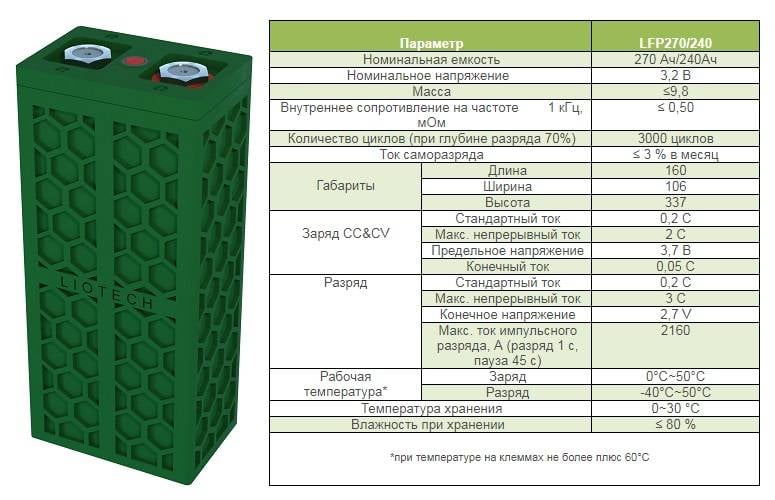
In 2015, the “Autonomous Power Sources” Scientific Center, jointly with the Autonomous Power Sources Plant, PJSC, announced the opening of a full-cycle production of lithium-ion batteries. However, currently information on the scale of production and the degree of localization is missing.
The technologies of both LiFePO4 batteries and other types of lithium batteries will be developed, and their implementation in Russia, as well as the possibility of using as an energy source for NPSL, deserve close study by specialized organizations.
Modern Russian NPU
The lack of a working domestic VNEU and solutions based on high-performance lithium batteries, combined with the high cost and delays in the construction of multi-purpose submarines, can force the Russian Navy to return to the concept of equipping the low-voltage submarines with NPIs of low power. At the moment in the world, under the influence of "green", there is a departure from nuclear energy. In the near future, Russia does not plan to abandon the “peaceful atom”, it is actively developing in this direction, and most likely is “the first among equals” in the field of nuclear energy.
One example of the emergence of breakthrough technologies among Russian nuclear scientists is examples of creating a small-sized nuclear power unit for the Poseidon unmanned underwater vehicle and a nuclear rocket engine for the Burevestnik cruise missile with an unlimited flight range.
There is no reliable data on the Poseidon BPU nuclear power unit. Presumably this could be a reactor with a liquid metal coolant with a capacity of about 8-10 MW, based on that developed by the AP Technological Research Institute. Aleksandrova (NITI) project AMB-8, with silent magnetohydrodynamic cooling pumps of the primary circuit.
Given the specificity of the use of the Poseidon unit, its nuclear power unit may have a limited lifespan, lasting several thousand hours, which will not allow it to be directly borrowed for promising submarines, but leaves it as a source of technological solutions.
The presence of radiation protection at a nuclear power plant in the Poseidon unit is in question. On the one hand, the absence of the crew does not require full radiation protection, only the so-called "Shadow" protection compartments with sensitive devices. On the other hand, the lack of radiation protection may complicate the operation of the Poseidon unit - installation / removal from the carrier; maintenance work even though its default reactor is “plugged”.
Both in the USSR and in Russia, reactors with a liquid-metal coolant were developed very actively, up to serial use in submarines of the 705 "Lira" project, which has outstanding technical characteristics, as well as an extensive set of unsolvable problems. It is likely that the “liquid metal” (presumably) NPU of the Poseidon unit is effective only within the framework of the problem to be solved and cannot be adapted for long-term trouble-free operation.
If NPI with liquid metal coolant and with a long autonomous trouble-free operation cycle cannot be realized, then the option of creating a low-capacity NPI based on reactors developed in the same NIKIET, where Dollezhal's egg was previously designed, can be considered.
From the article of the Deputy Director - General Designer for Civil Objects of JSC NIKIET A.O. Pimenova:
In particular, low power plants (ASMM) Vityaz, Shelf and ATGOR should have minimal dimensions and high autonomy. They are designed in an encapsulated design, which gives an increased level of safety of the ASMM. The Vityaz integrated transportable integrated power plant, based on a pressurized water-cooled reactor, an electric capacity of 1 MW and a thermal capacity of 6 MW, weighing no more than 60 tons. The core campaign is 40 000 hours, the frequency of the reboot is six years, air cooling, with mechanical air pumping.
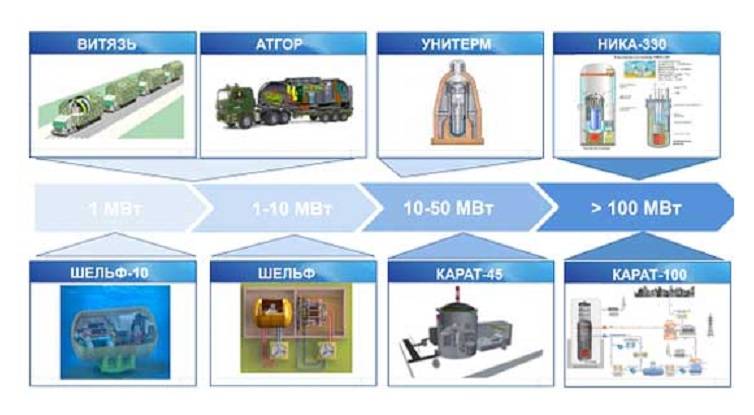
In the power range from 1 to 10 MW, the project ASMM “Shelf” and the promising project “ATGOR” are proposed based on a gas-cooled low-power reactor with an open cycle. The ATGOR mobile unit on an automobile semi-trailer is capable of producing 3,5 MW of thermal and 0,4-1,2 MW of electrical power. The lifespan is 60 years, nuclear fuel is reset once every ten years.
ASMM "Shelf" is the main development of "NIKIET", can be supplied in the form of ready-to-use energy capsules and is intended for power supply of technical equipment operating in oil and gas fields, including those remote from a significant distance from the coast and having a year-round working cycle during 25-30 years old. The AFMM "Shelf" includes a double-circuit nuclear reactor with a water-cooled integrated reactor with a thermal power of 28 MW, a turbogenerator installation providing power generation with a power of 6 MW and a system for automated and remote control, monitoring and protection by technical means of the installation.
The life of the ASMM "Shelf" is 60 years, the 40 000 core campaign, hours, the frequency of overload for six years. The weight of the transported module is 375 t. The reactor is under the protection of the safety hull, which in case of accidents with loss of coolant provides 72 hours to decide on further actions. Turbine generator is available for repair. From the influence of external factors, all elements of the ASMM "Shelf" are closed by a protective sheath.
Thus, it can be assumed that the developments of the Russian nuclear power engineers quite allow us to create a compact autonomous NPI with an electrical capacity of 1-6 MW with a life of up to ten (and possibly more) years between reloads of the reactor core. If a compact nuclear power unit can be created on the basis of reactors with liquid metal coolant, then its characteristics can be even more impressive. Placing the reactor in an isolated capsule will allow you to isolate it from the submarine hull as much as possible and to prevent a significant increase in noise compared to the NPS / DEPL.
NPSL or diesel-electric submarines with an auxiliary nuclear power plant?
First of all, it must be said that the statements “we do not need naval submarines, quite enough conventional diesel-electric submarines” do not withstand any criticism, and refer to an attempt at complacency - “if we do not succeed, then we don’t need to.” The time of classic diesel-electric submarines is coming to an end, their export potential will rapidly decline, not because of the “mods” on NNLs, but because the need for frequent ascent to recharge the batteries is disastrous for a submarine. Given the rapid increase in the number of unmanned aerial vehicles (UAVs) being developed, including in the interests of the Navy, a radar or a thermal imager of the UAV will be detected by the radar or thermal imager of the UAV and destroyed to the periscope depth.
Does the Russian Navy need diesel-electric submarines with an auxiliary nuclear power plant, or is it better to focus on the development of VNEU and modern batteries for naval submarines? The answer to this question requires getting answers to several other questions:
1. How successful and expensive (low-cost) the Husky submarine will turn out to be and how much will diesel submarines with an auxiliary NPI cost?
2. Is the industry of the Russian Federation capable of creating a VNEU at reasonable time and at a reasonable cost, or producing modern batteries, the use of which on domestic submarines will allow them to compete with the world's best counterparts?
On item 1. If, for any reason, the Husky submarine of the project turns out to be expensive and its construction will take a long time, and the diesel-electric submarine with an auxiliary NPI will be much cheaper, albeit at a cost of more modest characteristics, and easier to build, can be considered and implemented to provide the Navy with a sufficient number of submarines.
The cost of the ICAPL project 885 / 885M is from 30 to 47 billion rubles. (from 1 to 1,5 billion dollars), the cost of the SSBN project 955 / 955A is about 23 billion rubles. (0,7 billion dollars). The export value of the diesel-electric submarines of Project 636 is $ 300 million, respectively, their value for the Russian Navy should be about $ 150-200 million. Even if their cost, in the case of equipping an auxiliary nuclear power plant, doubles, then in this case the cost of diesel-electric submarines with nuclear power plants will be three to four times lower than the cost of the ICAPM project 885 / 885M. This does not mean at all that it is necessary to abandon the "real" nuclear-powered vessels in favor of diesel-electric submarines with nuclear power plants, but that their existence during navy can be quite cost effective, confirms.
On item 2. The problem of VNEU and batteries of increased capacity will have to be solved in one way or another, at least to provide the shipbuilding industry with export orders. If the terms of creating VNEU and accumulators of increased capacity will be delayed, and their characteristics and cost will not meet the requirements of the Russian Navy, then the design of a diesel-electric submarine with an auxiliary nuclear power plant may be in demand, otherwise it may be questioned.
Is it possible to insert a compartment with NPIs into existing 636 or 677 projects? The 636 project is too old to implement such radical innovations as an auxiliary nuclear power unit. The possibility of inserting an auxiliary NPP in the submarine of the 677 project can only be assessed by the developers of this PL, together with the developers of the NPP. The fate of the project 677, and so is in limbo, according to some information just because of problems with the power plant. In this case, the development of the auxiliary NPP installation can both reanimate and finally bury the 677 project.
Even less information is available about the project of the fifth-generation Russian naval submarines "Kalina". The fragmentary information contains information on the development of several versions, both with VNEU, and with batteries of increased capacity. Whether this information is reliable, or is a good wish, it remains only to guess, respectively, there is no sense to build speculation about the possibility of using an auxiliary NPI on the Kalina submarine.
In this way, The need to develop diesel-electric submarines with an auxiliary NPP for the Russian Navy can be linked to the ratio of the following main factors: the cost and construction time of the promising HUSKY submarines and the cost and construction time of the submarines with the VNEU or accumulators of increased capacity.
On the other hand, progress in the creation of small NPPs may lead to the fact that they will develop regardless of the success in creating VNEU or accumulators of increased capacity and will be realized and in demand within the framework of a single project of a promising submarine.
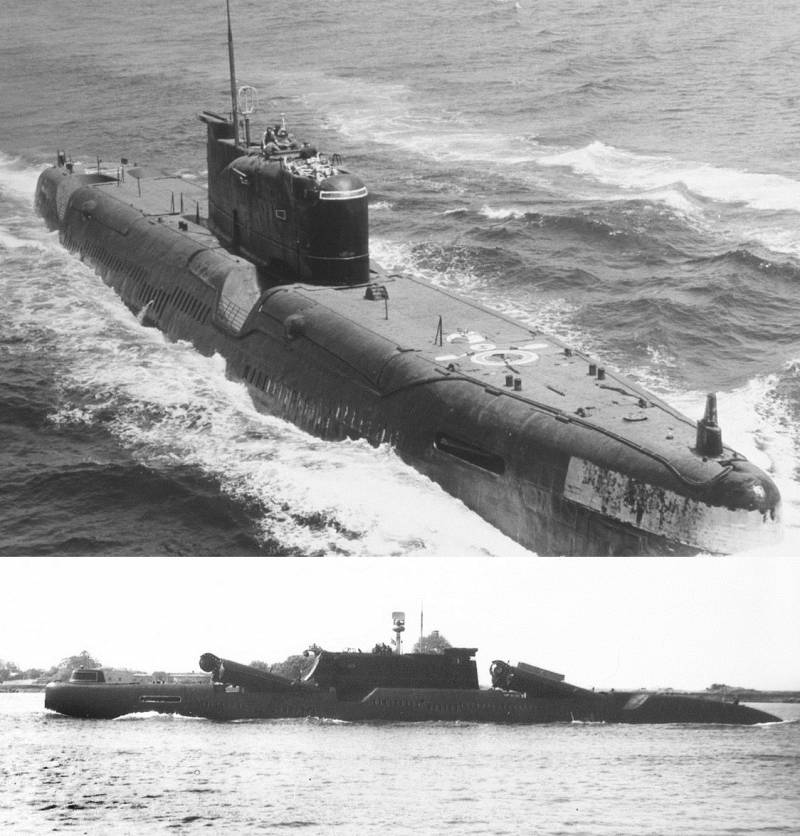

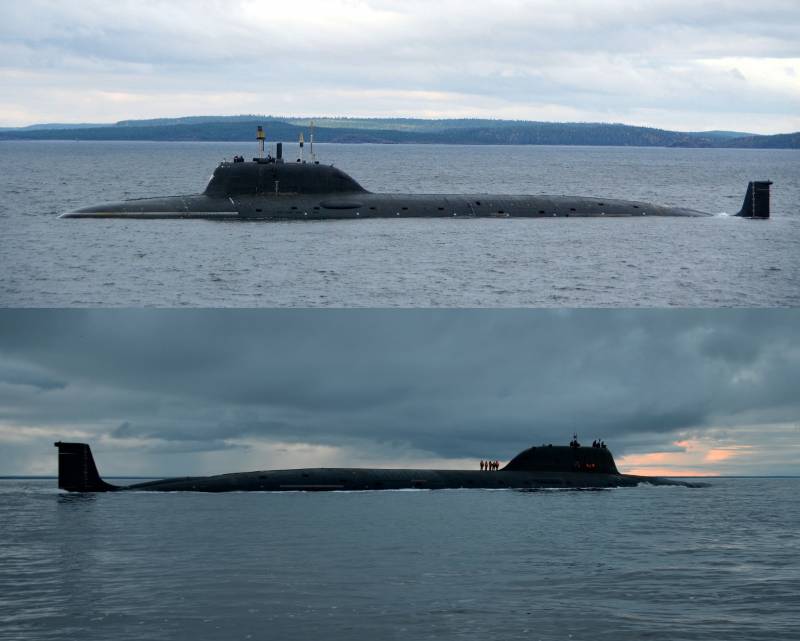

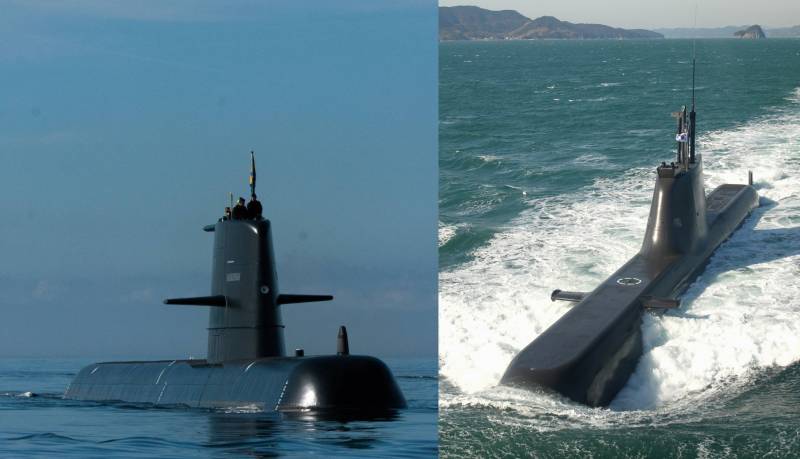
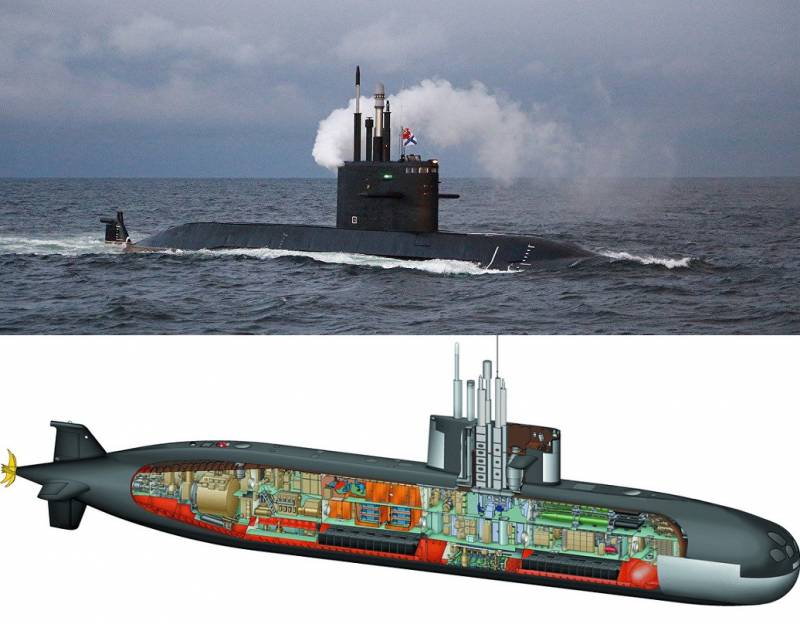
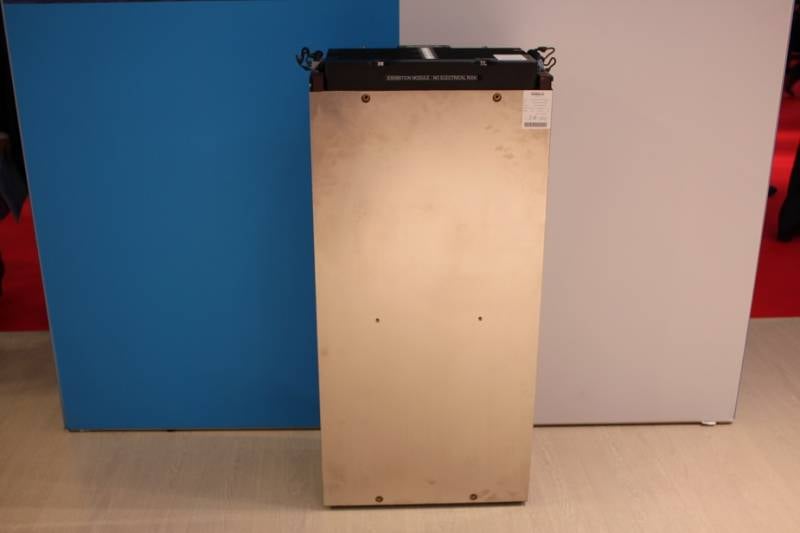
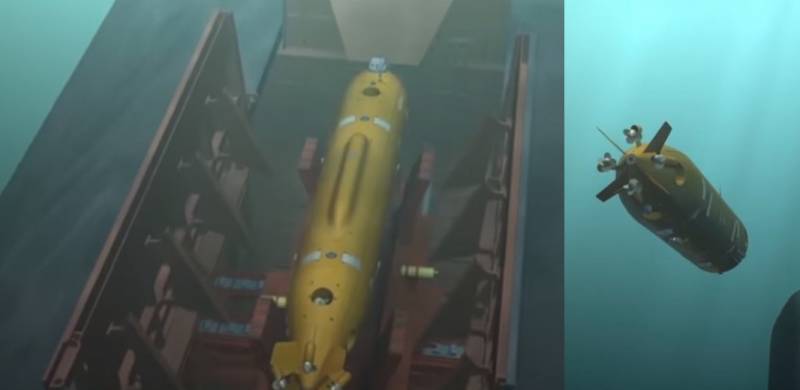
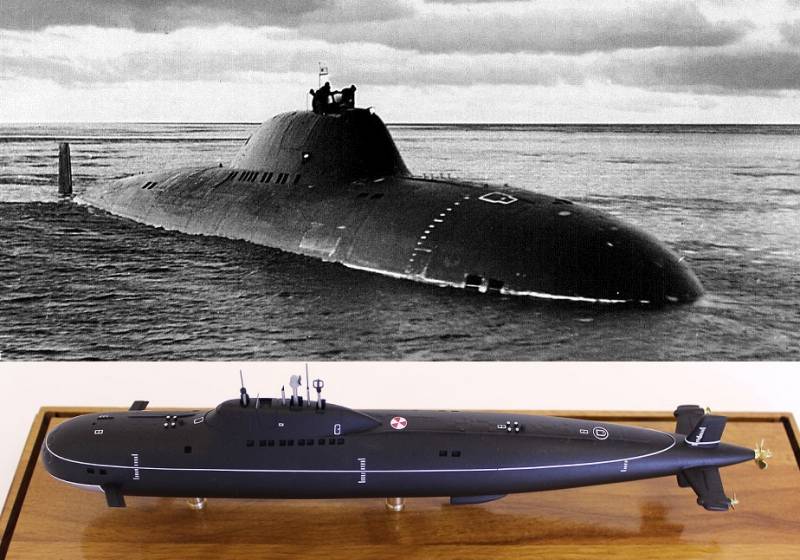
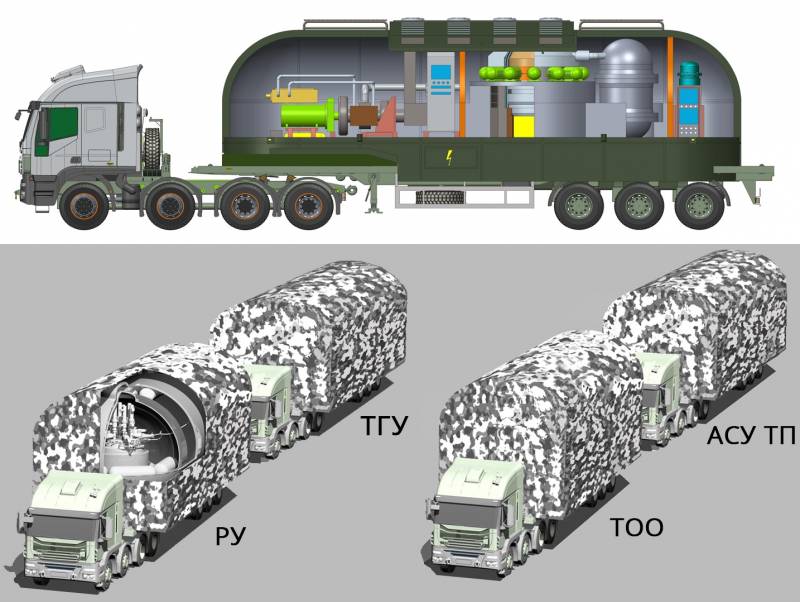
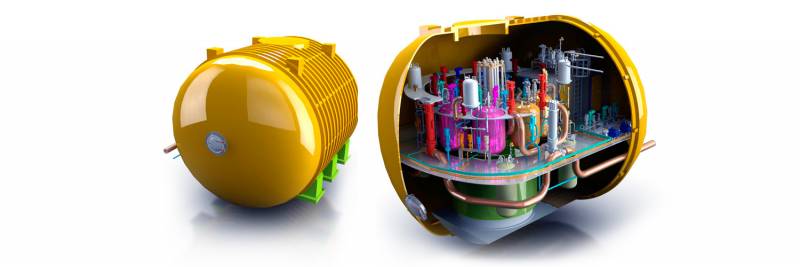
Information